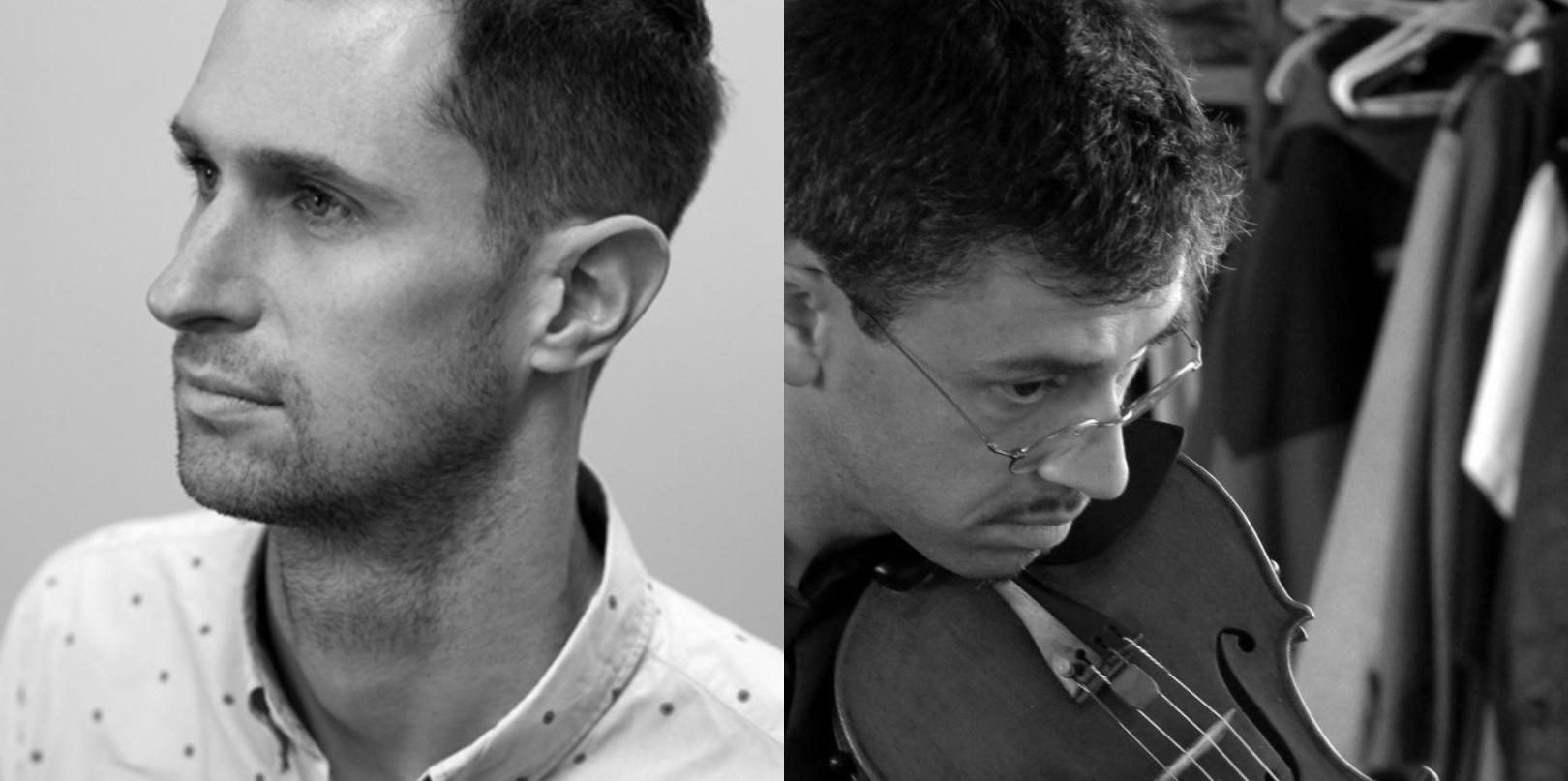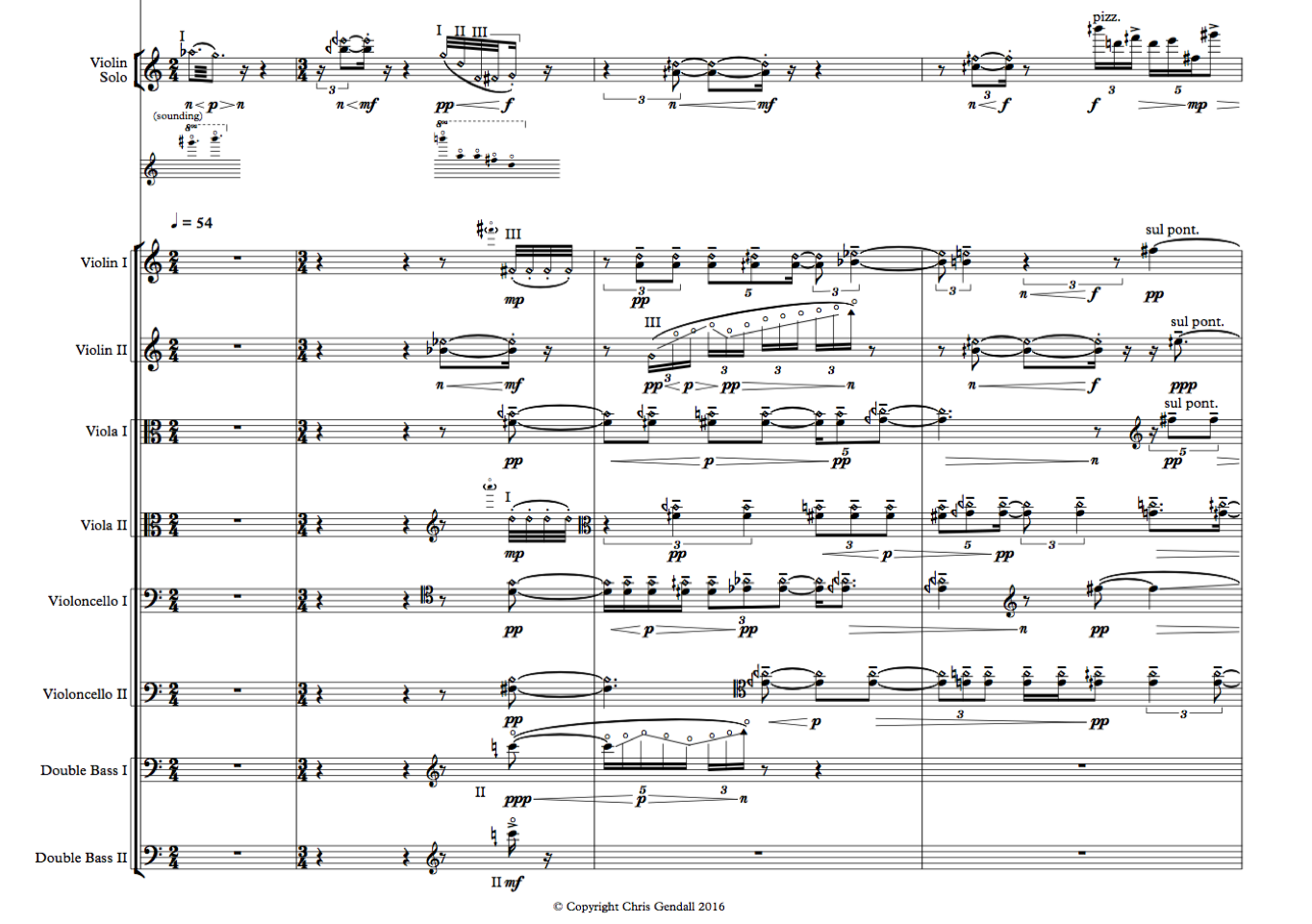
You can watch a video interview with Chris here.
How did the opportunity to write the Violin Concerto come about?
Mark and I discussed the possibility of a violin concerto (over lunch) at the Nelson Composers Workshop a few years ago, with the idea that a concerto could take a number of different forms (chamber music, orchestra, electronics, etc.). It was a tantalising prospect: this wonderful player giving me carte blanche to write him a work I knew he’d play beautifully. Like many other composers who have been lucky enough to work with him, I feel like Mark engages fully with my music, and gets really beautiful results from the score.
How much did you consult with Mark during the composing process?
I wrote it when I was living in Dunedin, and Mark was (at that time) still living in California. We skyped once, I think, and I floated concepts and ideas as they arose.
What practical considerations did you have to take into account to manage the soloist’s dual role of performer and conductor? Did it influence the content of the piece?
This possibility was present at the work’s conception. I wanted the work to interrogate the concerto format, with a particular focus on the baroque era. Because the ensemble includes celesta, I envisioned the possibility of using the keyboard player as a secondary conductor, in tandem with the soloist. (The work can also be conducted, but this worked so well in the premiere performance!)
The only other practical considerations were in parts preparation (they include a LOT of extra information), and the chamber music required of the ensemble musicians.
 Gendall: Violin Concerto, opening, soloist and strings.
Gendall: Violin Concerto, opening, soloist and strings.
The material in the concerto is based on fragments of disco songs. What did you find attractive about this source material? How did you go about analysing and transforming it?
At the time I wrote the concerto, I was preoccupied with the way that quotidian sounds infiltrate the fabric of a composer’s work. I transcribed birdsong, the sound of water droplets, the tuning fork I use for pitch reference, and some tiny fragments of the music I love – in this case an obscure disco track. I used both my ear and the kind of technology that can provide an up-close perspective of the timbres, gestures, and energies in question. Because the fragment is so small, I would really doubt that anyone would make a sonic connection between the work and its inspiration: it’s more like a drawn-out, cloudy resonance of a loudspeaker blast, or the ringing in your memory after the disco ends.
The concerto has an interesting two-part structure, with the second part twice the length of the first. How did you approach form in this piece? To what extent do you think about it as you are writing?
I think a lot about proportion of all types (rhythms, phrases, sections, movements) and, in this work, durational proportions are designed to be as diverse as possible. At times, these durations are more continuous (particularly in “Chanter”, whose articulation is inspired in part by bagpipe technique), and at other times they interact more with silence.
 Gendall: Violin Concerto, opening of second movement, soloist.
Gendall: Violin Concerto, opening of second movement, soloist.
The full score of Violin Concerto can be obtained from SOUNZ here.
SOUNZ blog is designed for expressive discussion and debate amongst the arts and broader community. This is intended to be a safe space so please remember to keep comments respectful and avoid personal attacks, criticisms of specific organisations and defamatory language. Comments are moderated to ensure that they comply with SOUNZ’s Community guidelines.
